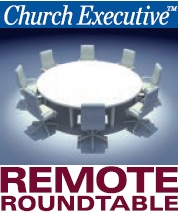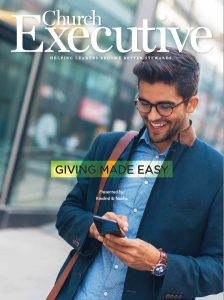
 How to choose the right platforms for your unique church
How to choose the right platforms for your unique church

Director of Customer Experience
Kindrid
What common mistakes do you observe churches making as they introduce new giving options to their congregations? Are there resources or expertise you can offer to help them more effectively communicate the availability and use of these new giving options to church members?
Frazier: Often, churches don’t communicate enough about giving options. If it’s only mentioned during one or two services, a lot of people will miss it or forget. We recommend mentioning the new platform every Sunday for at least six weeks. We also recommend sharing it using multiple outlets, like slides before service and emails supplied by the giving provider.
At Kindrid, we provide a range of marketing materials, like videos and email templates, to help introduce and spread the word about online giving. Plus, we partner churches with an experienced Success Coach who specializes in one-on-one training sessions. During the sessions, we personally assist churches in creating strategies that streamline communication and grow giving engagement, and guide admins through specific features and functionalities.

Senior Director, ACH Network Administration & Industry Verticals
Nacha
Smith: A well thought-out and informative campaign explaining all giving options — and the benefits of each — is a recipe for success.
At ElectronicPayments.org, Nacha has a wealth of free resources to help nonprofits start an ACH donation program. A dedicated nonprofit section includes a case study on how Denver’s Mission Hills Church uses ACH for recurring donations.
There are also several white label documents that a church can easily make its own. Each conveys the value of recurring donations via ACH to congregants.
We also suggest having an informative campaign with the church treasurer (not the preacher) speaking at services or business meetings about the value of ACH.
To suit today’s lifestyles, we recommend focusing on the convenience of ACH for parishioners. Their donation is still made even if they’re away on Sunday. They don’t have to write a check or bring cash and, in turn, the church has less to take to the bank.
Instead, ACH puts donations directly into a church’s bank account. And the low cost of ACH means more money for the mission.
What are some signs or signals that a church’s current giving platform isn’t the best fit?
Smith: Probably the paramount concern for a church would be whether a large portion of donation dollars is being lost to processing fees.
Other issues to look for include whether volunteers and / or staffers spend a great deal of time counting cash and checks, and taking them to the bank.
Also, are donations inconsistent throughout the year (i.e., a summer lull)?
Frazier: If you feel limited by your giving platform, it could be because it’s not built for ministry. You just aren’t getting the features and integrations that organically grow giving and save time.
In some cases, churches aren’t aware of all the features their giving platform offers. If you want access to specific tools, reach out to your provider to see if they offer it.
Also, if online giving isn’t working, or as impactful as you’d like, it might be due to a poor user experience. That’s worth exploring as you do research.
As a church considers its congregational culture, what questions should it be asking when vetting which giving platforms might be the best fit?
Frazier: Is the service built around facilitating payments or gifts? This is a great question to find out if the experience will be intuitive and simple for givers, respecting giving as a relationship between your church and your givers.
Also ask, How does the platform help with launching and implementation? While giving software can be simple to use, choose a platform that walks you through the features and helps you launch giving.
In the same vein, questions like, What does support look like 6 months after sign up? and Does the provider have a record of serving churches? helps ensure the platform will work for you in the long run.
Smith: Which payment method is reliable and cost-effective? Many payment methods are reliable, but ACH — with its low fees — is extremely cost-effective. This, in turn, allows more of the donation to go to the church’s mission, not to fees.
What’s the membership demographic? Younger parishioners, certainly — but also tech-savvy members of all ages — routinely make electronic payments (mortgage, utilities). Many expect it. Donations should be no different.
Will we provide a substitute donation envelope that notes the parishioner gave online? In our discussions with churches, Nacha has heard that some people want it to look like they’re “putting something in the plate.”
Is the platform able to track all donation methods, as well as where they’re going (building fund, holiday fund, etc.)? This is needed for the year-end consolidated tax statement.
Which payment method are members most comfortable with? People won’t use a method they’re uncertain of. Clear and consistent messaging about a payment method ensures its success.
If a church is especially interested in engaging first-time givers, what advice would you offer as they consider their giving platform options?
Smith: ACH will appeal to younger, first-time givers. To a great extent, today’s generation doesn’t have a checkbook, and they don’t carry much, if any, cash. ACH fits their electronic lifestyle perfectly. There’s no hassle to it.
Additionally, the message of low fees and more money for the mission resonates with young people.
Frazier: Choose a platform with multiple giving options, because first-time givers are unique in how, when and where they want to give. Some prefer text gifts; others love app giving; and many go straight to the church’s website to give. The key is to pick a platform that makes the giving experience consistent across different devices, so it’s familiar whether they use a smartphone, tablet or computer.
Also, use a platform with unlimited funds so that you can create a list of specific funds to select from. Maybe a general fund doesn’t inspire first-time givers, but a special fund for rebuilding homes after a natural disaster speaks to them more.

Likewise, if a church is particularly interested in developing more regular giving habits among its members, what advice — related to choosing a giving platform — would you give?
Frazier: Begin by researching platforms with recurring giving options that are visible and easy set up.
Then, look at support and see if they offer features like one-on-one training sessions or scholarship programs to maximize consistent giving.
Smith: ACH is perfect for promoting all recurring donations, including tithing and other fundraising efforts. Members set a donation amount to be deducted from their checking accounts at whatever frequency they choose. This maintains a consistent level of giving. And ACH debits allow members to give only what’s in their account and not go into debt.
For older parishioners, the ACH messages stressing convenience / safety / consistency will resonate. Along with eliminating the need to carry cash or write a check, ACH means their donations get to the church even if they can’t physically be there.
The older generation almost certainly receives Social Security via Direct Deposit — which is ACH. Some are paying bills online, which is also ACH. So, they’re already using ACH, even if they don’t realize it.
Is there a “mix” of giving platforms that you’ve seen work especially well in churches? Please explain.
Frazier: Lots of giving platforms are designed to work well together. For instance, Kindrid works with the church app, MinistryOne. Since Kindrid’s giving is built in, people can give through Kindrid on the app while still enjoying MinistryOne features, such as listening to sermons.
As far as the admin side goes, it’s really important to choose a platform designed for ministry because you’ll get direct integrations with other church management software.
What about cost? How important of a factor should that be as a church considers its giving platform options?
Frazier: Cost is important, because you don’t want to overpay — especially when you can put that money towards your church’s mission. But, you don’t want to underpay and get fewer features.
Look at cost versus features to see how they stack up. And periodically check for deals from top providers to help your church save money. Kindrid is running a $0/month promo right now that saves more than $500 annually, but it’ll go away soon!
Smith: While Nacha can’t speak to the costs of specific platforms, we can say that ACH is often less expensive than other payment options. And it’s certainly less time-consuming and less labor-dependent than opening envelopes and making deposits. ACH eases the donation burden for both churches and their members.


